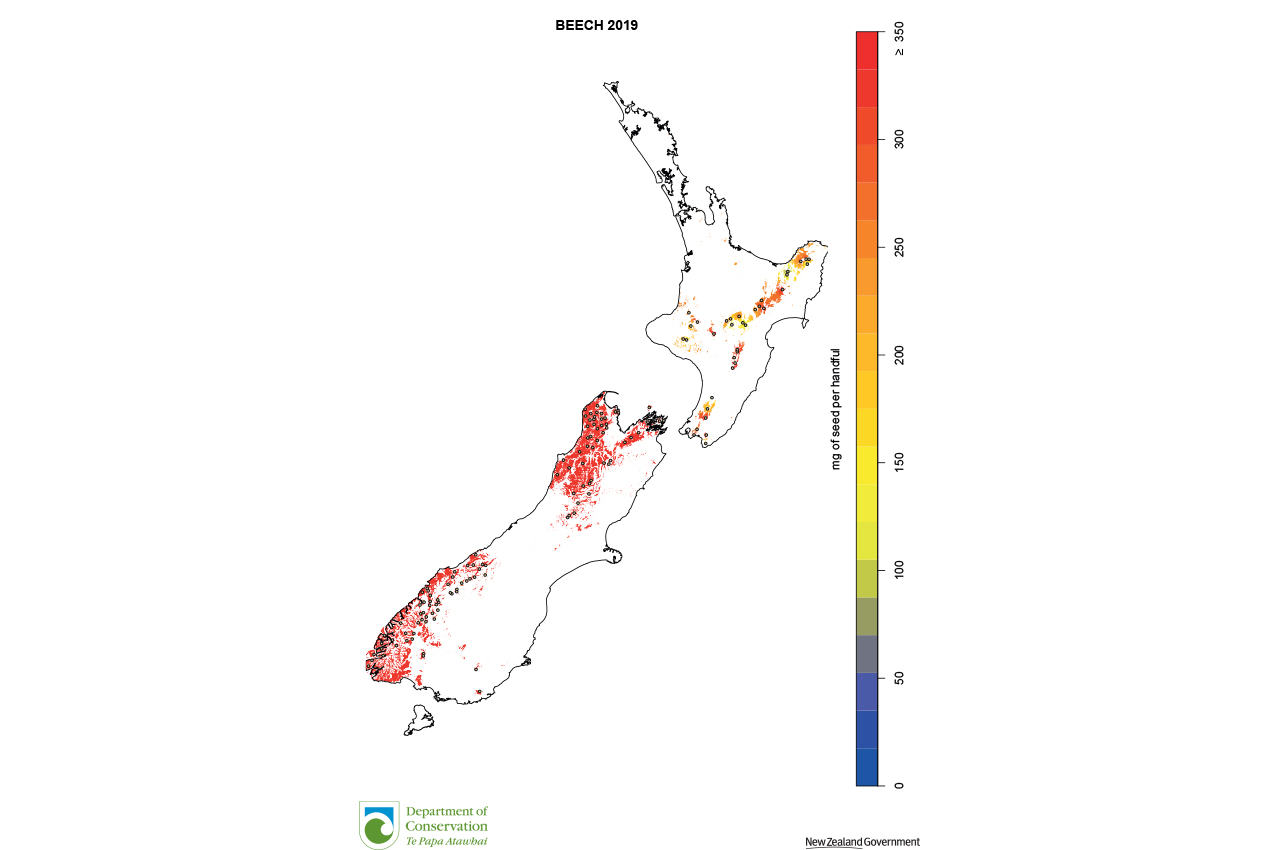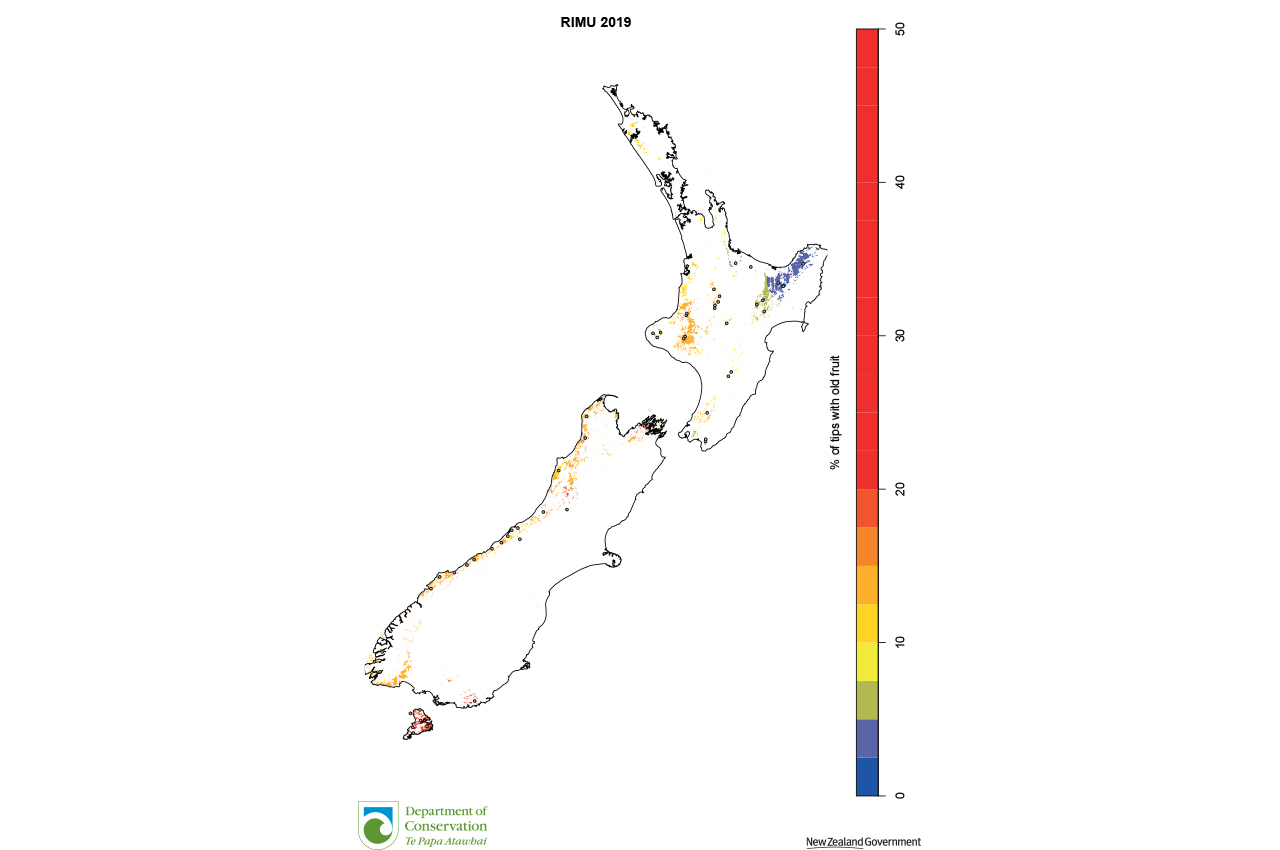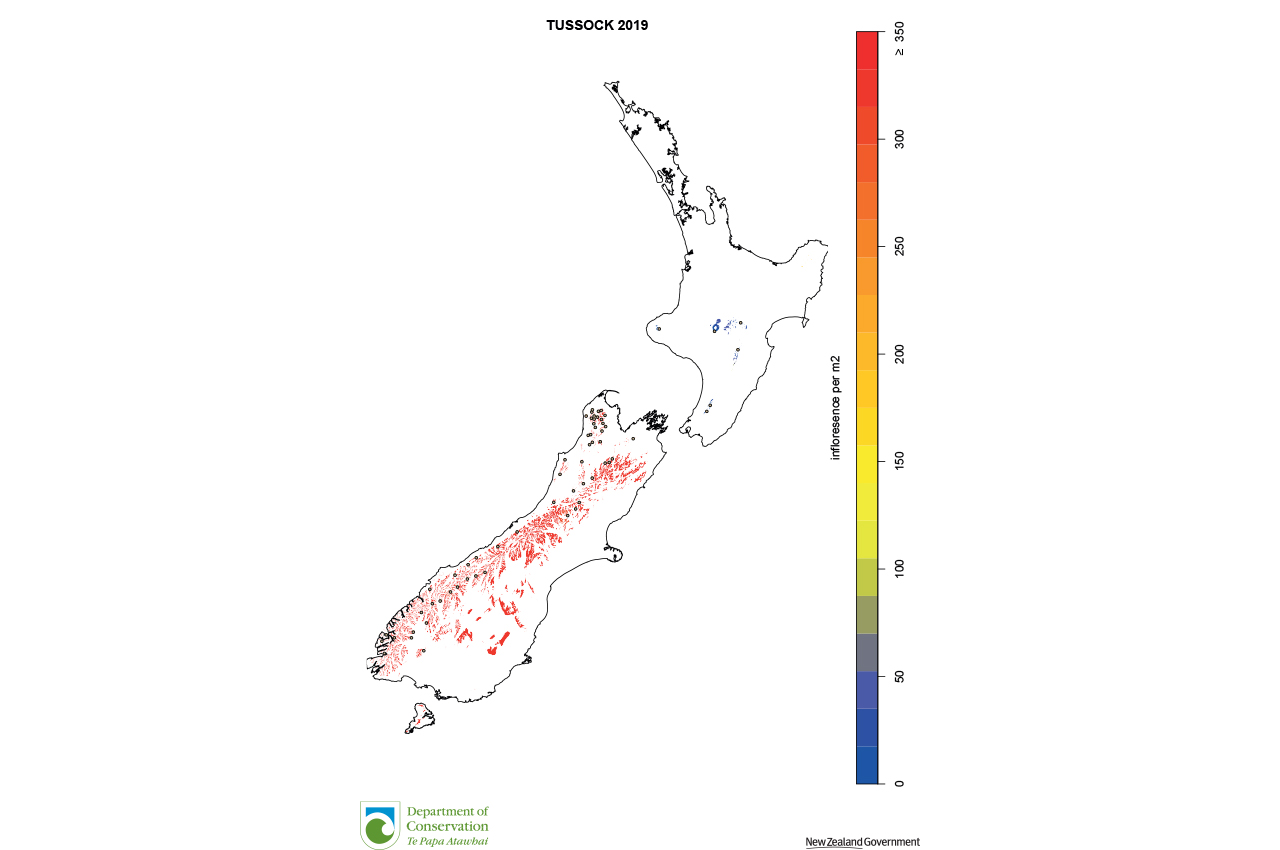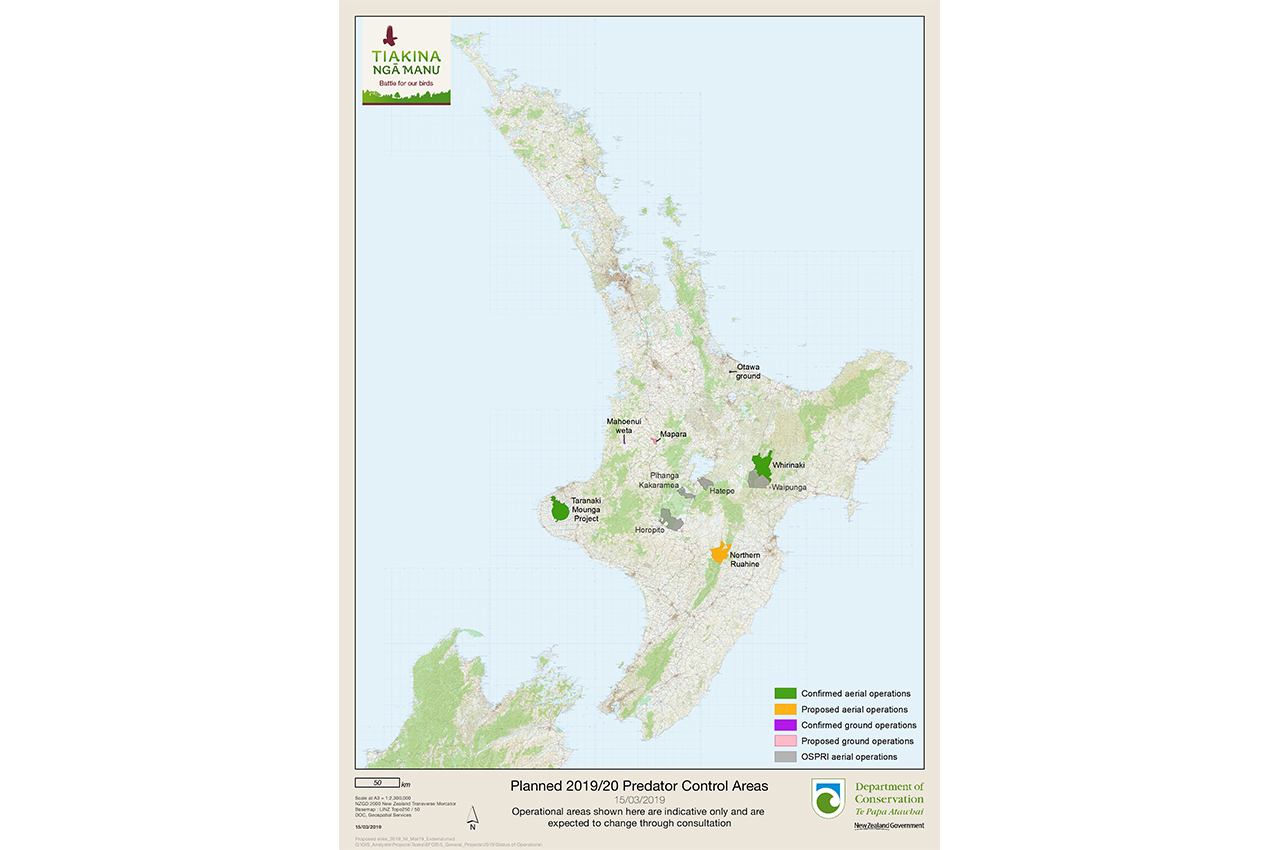Forest & Bird’s rat trapping experts have said official maps showing areas where this year’s mega-mast is occurring demonstrate more aerial 1080 is needed to control predators. They are pleading with Government and councils to increase their 1080 rat control programmes.
The organisation says the maps demonstrate how little rat or stoat control there is across most of the nation’s forest and tussock land, and that local native species could easily go extinct as a result.
Debs Martin, from the Pelorus Bat Recovery programme, compared the maps, which show the massive country-wide scale of this year’s mega-mast, with maps showing the comparative paucity of rat and stoat control available to deal with it.
“Even with a growing number of community trapping groups, and the biggest investment ever made in biodegradable 1080 rat control, only 12% of conservation land, or less than 4% of the entire country, is being treated with aerial 1080 by the Department of Conservation,” Debs Martin, regional manager for the top of the South Island, says
“I manage an intensive trapping protect over 250ha in the Pelorus Bridge Scenic Reserve, but rats are pouring out of the 166,000ha Richmond Ranges, where there is no predator control at all,” she says. “This is happening all across the country, and as we come into breeding season, native birds and bats will have slim chances of survival.”
“New Zealand desperately needs to get behind aerial 1080 as our best way of controlling rats across large or rugged areas, so birds, bats, and other natives can breed and raise their young successfully.
“While we can protect backyards and even suburbs with comprehensive trapping programmes, most of our forests have nothing at all – not traps, nor toxins.
“Our forests are experiencing a rat plague, just like our towns and cities are. The difference is that there is no way to trap in dense, steep and vast forests, and even though DOC is running the country’s largest ever predator control programme, it is still only covering 12 per cent of conservation land.”
“This is a crisis. The Department of Conservation needs more money now, and we all need to ensure the country is better prepared for the next mast event. Mast events are becoming more common as the climate warms, so we must speak up and support the Department of Conservation and our Regional Councils in looking after our forests and native animals,” says Ms Martin.
“As this crisis becomes even more apparent, we urge the Government to invest more in extra aerial 1080 this year. Otherwise across the country our rarer birds and animals may become locally extinct.”
DOC has budgeted a record $38 million for predator control in 2019/2020.
Areas affected by the mega mast:



And areas of pest control:









